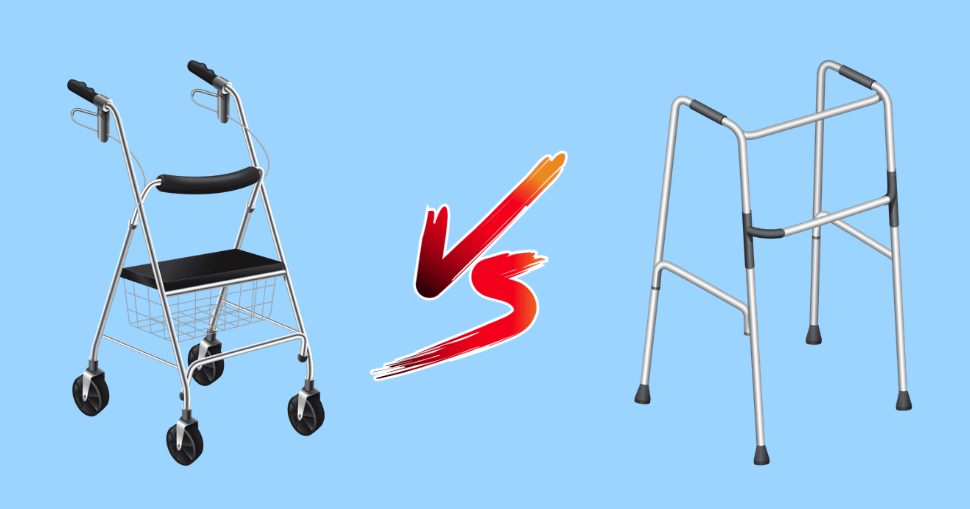When mobility becomes a challenge—whether due to age, injury, or a medical condition—walkers are often the go-to solution for added stability and confidence. But with different types of walkers available, many people find themselves asking: what’s the difference between a rollator walker and a standard walker? Understanding these differences is essential for choosing the mobility aid that best fits your lifestyle, needs, and environment.
What Is a Standard Walker?
A standard walker, often referred to as a basic or traditional model, is a straightforward mobility aid that helps users maintain balance and stability while walking. It usually features a lightweight frame made of aluminum and has four legs equipped with rubber tips or gliders to enhance grip and safety. Some versions come with two front wheels, making it slightly easier to move forward.
To use a standard walker, you lift it slightly, move it a few inches ahead, and then take steps forward while using the walker for support. This motion is repeated continuously as you walk. Because of its design, a standard walker is ideal for short distances, controlled environments, or indoor use where terrain is even and speed is not a priority.
What Is a Rollator Walker?
A rollator walker is a more advanced and feature-rich version of a mobility aid. Unlike standard walkers, rollators have three or four wheels, ergonomic hand grips, and hand brakes. Many rollator models come equipped with a seat for resting and a storage pouch or basket, making it easier for users to take breaks and transport their belongings.
Rollators are designed for users who need balance support but have enough strength and stability to manage a wheeled device. Instead of lifting the walker with each step, users can push a rollator smoothly in front of them. The rolling action offers more freedom of movement and is particularly helpful for outdoor use or longer walks.
Key Differences Between a Rollator and a Standard Walker
1. Mobility and Speed
The clearest distinction lies in the way each mobility aid operates A standard walker requires lifting and setting down with each step, which can be slow and tiring, especially for those with limited arm strength. In contrast, a rollator glides effortlessly, enabling smoother and faster movement with less physical strain.
2. Wheels and Braking System
Standard walkers may have no wheels or only two front wheels, while rollators come with three or four wheels and include a handbrake system for added safety. The brake system provides added safety and control, especially when moving across hills or uneven ground.
3. Seat and Storage
One of the most appreciated features of rollators is the built-in seat. It allows users to take breaks whenever needed, which is particularly beneficial for individuals with fatigue or endurance issues. Standard walkers don’t offer a seating option. Rollators also come with a basket or pouch, perfect for storing belongings during a walk, something a basic walker lacks.
4. Weight and Portability
Standard walkers are generally lighter and more compact, making them easier to transport or store in a car trunk. Rollators, though bulkier due to the wheels and seat, often fold for storage but may be heavier, which can be a concern for users or caregivers who frequently transport the device.
5. Balance and Stability
If balance is a major concern, especially for individuals recovering from surgery or those with severe weakness, a standard walker may offer more stability. Its stationary legs give the user a secure foundation. Rollators, while more mobile, require some control and coordination to manage the wheels and brakes properly.
Who Should Use a Standard Walker?
A standard walker is often recommended for:
- People recovering from surgery, such as hip or knee replacements
- Individuals with significant balance issues
- Users who walk short distances at home or in assisted living facilities
- Those who need maximum stability and can handle the effort of lifting the walker
This type of walker offers a higher degree of safety in controlled settings, especially when mobility is severely limited.
Who Should Use a Rollator Walker?
A rollator walker is suitable for:
- Active seniors who want to maintain independence
- Individuals with mild to moderate balance issues
- People who experience fatigue and may benefit from resting along the way
- Users who want to carry items while walking outdoors or in public spaces
Rollators offer flexibility and convenience for those who are relatively mobile and enjoy getting out and about.
Final Thoughts
Choosing between a rollator walker and a standard walker depends on individual needs, physical ability, and lifestyle. A healthcare professional—such as a physical therapist or physician—can provide valuable guidance on the best option.
If safety and stability are your top priorities and you don’t mind a slower pace, a standard walker may be the better choice. On the other hand, if you’re looking for more freedom, comfort, and the ability to move faster over varied terrain, a rollator walker can make daily life much easier.
Ultimately, the goal is to find a device that enhances your mobility, supports your independence, and helps you stay active—safely and comfortably.

















